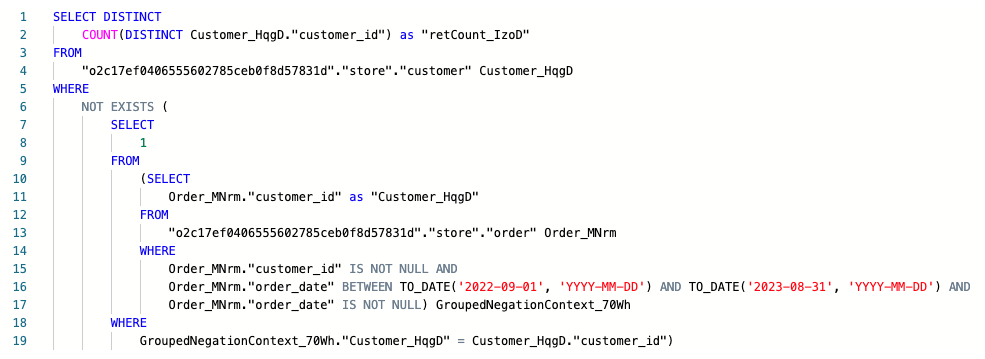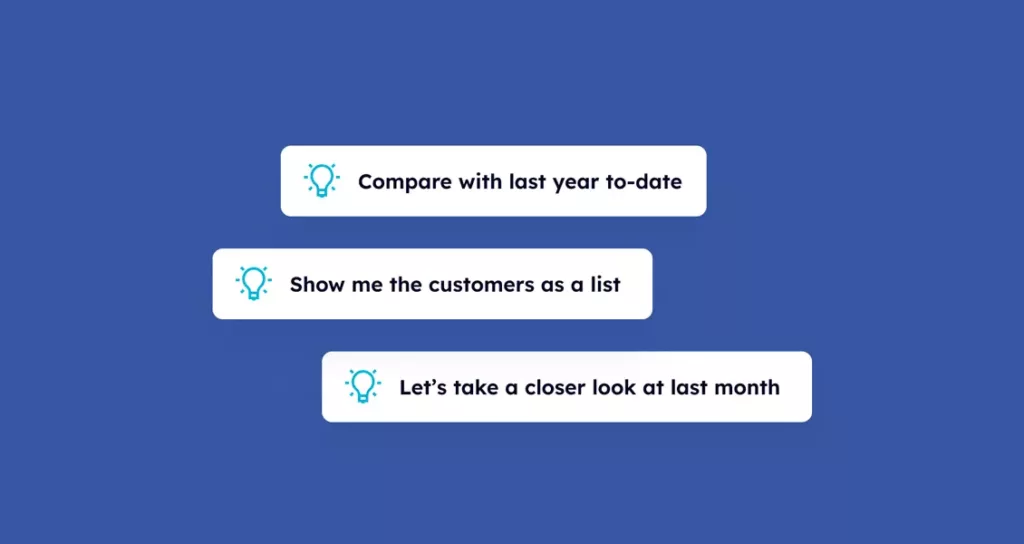Natural Language to SQL: The Ultimate Bridge for Business Efficiency
In this post we take a closer look at how Natural Language to SQL can empower today's business user.

In a rapidly evolving business world, the importance of data-driven decision-making cannot be overstated and natural language to SQL is a huge part of it today.
Fact-based decisions are the cornerstone of any successful contemporary business strategy, but it’s also out of reach for a large segment of employees.
Harnessing the power of data and understanding it can provide valuable insights that propel businesses to make informed and efficient decisions. However, without leveraging data, a business could be akin to a ship navigating without a compass. The advent of ‘natural language to SQL’ is set to revolutionize this space by bridging the gap between business needs and technicalities inherent in data handling.
The Business-Data Dichotomy
The business landscape often comprises two sides: one laden with the technical aspects of data, including the database infrastructure, and the other with the business needs for this data.
The challenge is to bring these two sides together harmoniously.
The Technical Side: The Role of SQL
The technical side is predominantly centered around SQL (Structured Query Language), the de-facto standard for retrieving information from databases. SQL has simplified data retrieval by using a relatively easy-to-learn structure compared to older methods that involved navigating data structures with complex code.
However, SQL still requires some level of technical education and so it has traditionally been reserved for data analysts or database administrators due to its learning curve.
The Business Side: The Decision Makers

While the above examples of SQL may be significantly simpler than writing code, it’s still not intuitive for the average business user.
Traditionally, top management has been the main consumer of data. However, as technology has evolved, the need for data has permeated through various levels and functions in the organization including marketing, sales, product management, and inventory control, among others. This has led to a frequent and diverse need for data access among a wider range of employees.
In other words, a gap exists between the business and the technical sides of an organization.
Bridging the Gap with Natural Language to SQL
So how do we close the inherent divide between the technicalities of data and its business needs? The answer lies in a paradigm shift in the way we interact with databases – the transition from technical SQL commands to a more intuitive ‘natural language to SQL’ approach.
Over the years, there have been numerous strategies to bridge this gap. The invention of SQL itself was the first giant stride, replacing the need for complex programming with a simpler, albeit still technical language. Following that, further steps were taken, such as the advent of pivot tables and graphical interfaces like Tableau. These innovations allowed for slightly less technical interactions with databases but with considerable limitations. However, none of these solutions entirely addressed the fundamental chasm between the technical and business sides of data interaction.
This is where the application of ‘natural language to SQL’ shines. It represents a significant leap in the evolution of data interaction and is already revolutionizing this space. This groundbreaking approach employs AI to understand and interpret queries posed in everyday language, thereby translating ‘natural language’ queries to SQL commands.
The introduction of this technique simplifies data retrieval from complex databases, making it accessible not only to data analysts but to non-technical business personnel as well. This breakthrough tackles the issue at its root, allowing business users to ask questions in their natural language.
A platform like Veezoo, serves as the interpreter, comprehending the questions, accessing the necessary data, and providing the sought-after information.
Essentially, natural language to SQL facilitates a conversational interaction with databases – just the way a business user would ask their colleague a question. It shifts data querying from a complex, technical task to an intuitive, straightforward dialogue, thereby closing the gap between the business and data teams completely. This is the key to bridging the gap and driving efficient, data-driven decisions in businesses.
The Promise of Natural Language Querying
Implementing this method of directly communicating with databases using natural language to SQL, leads to several significant benefits:
- Efficiency and Scalability: It shifts the data team from primarily responding to business data requests to improving data quality and infrastructure. This allows the data team to focus on more scalable and strategic tasks, which leads to an efficient and effective business.
- Empowering the Business User: It frees business users from their dependence on the data team, giving them access to the data they need, thereby fostering a data-driven culture.
- Faster and Better Decision Making: With more accessible data, businesses can make quicker and more informed decisions, leading to improved productivity.
By providing a more efficient method of communication between business and data teams, natural language to SQL allows for smoother collaboration. Essentially, business users become more self-serve and hence autonomous. This also means that your data team has way less ad-hoc requests to deal with and can focus on more strategic priorities.
Consequently, businesses become more productive and efficient.
Businesses Must Invest Wisely
Companies need to invest in natural language to SQL, robust data infrastructures, and semantic layers and data modeling. These investments are not mere expenses but are strategic foundations upon which companies can build their future.
The integration of natural language processing with SQL is akin to building an asset for your company. It’s an investment in technology that will pay dividends in productivity, efficiency, and smarter decision-making.
Moreover, integrating NLP into your data analysis processes ensures that your business’s technical and non-technical sides communicate efficiently, resulting in an organizational synergy that drives growth and innovation.
Choosing the Right Tools
While embracing this natural language to SQL revolution, it is crucial to choose the right tools and platforms. Look for solutions that offer ease of integration, high levels of accuracy in understanding queries, and scalability to grow with your business.
Veezoo is spearheading this revolution. By enabling seamless interaction between natural language and SQL databases, these platforms are essentially handing the keys to your data kingdom to all relevant stakeholders, irrespective of their technical acumen.

Training and Adaptation
As with any technological advancement, training, and adaptation are critical. Your team needs to understand the capabilities of natural language querying, and how it can be effectively leveraged for decision-making. Investing in internal training and fostering a culture of data curiosity will pave the way for the full realization of the benefits of NLP in data analysis.
The Way Forward
In conclusion, leveraging natural language to SQL is the ultimate bridge between business needs and data infrastructure. It magnifies the work of data teams, empowers business users, and ultimately boosts productivity and efficiency. However, it necessitates strategic investments in the right technologies, like natural language querying, good data infrastructures, and robust data modeling. These investments build up an asset that not only improves the present but also prepares businesses for future demands in the data-driven landscape. With the right tools in place, businesses can fully harness their data, turning it into a powerful engine for decision-making and growth.


